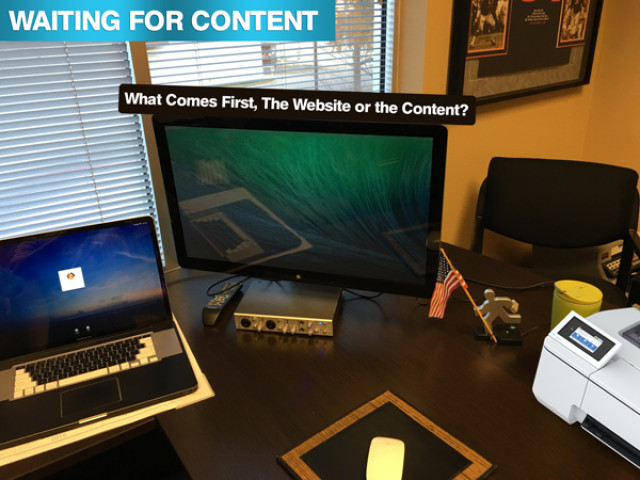The Real Cost of an Unclear Website Vision
Starting a website project without clear goals is like building a house without blueprints. You'll end up spending more, waiting longer, and potentially getting something you never wanted. Three fundamental questions determine whether your website succeeds or becomes an expensive disappointment:
- What problem does your website solve? Whether it's building brand awareness, generating revenue, or establishing credibility, your website needs a clear purpose.
- Are you enhancing an existing site or starting fresh? Each path has different challenges and costs.
- Is your current site broken with no developer support? Website abandonment is more common than you think, and recovery is possible.
Why Projects Fail: The Scope Problem
Most web projects fail before they begin because of misaligned expectations. The symptoms are predictable: blown budgets, missed deadlines, and mounting frustration on both sides. Three critical elements prevent this breakdown:
- Know exactly who you're talking to. A website for teenagers looks nothing like one for corporate executives.
- Provide actual content upfront. Your developer isn't a mind reader or a copywriter.
- Share your complete vision, including past challenges with previous developers or platforms.
The Content Crisis That Kills Budgets
Here's the uncomfortable truth: without content, your website project will cost twice as much and take three times longer than expected. Michelangelo could see the angel in the marble because the vision existed in his mind. Your developer cannot read yours.
When clients say "make it look cool" or "copy that other site," they're inadvertently choosing the most expensive path possible. Delivering your ideal website requires clear content from day one.
The "just get it done" moment always arrives in content-less projects. Someone compromises. Someone feels cheated. The website launches as a shadow of what it could have been. This isn't about developer skill or client unreasonableness - it's about starting with an impossible task.
Developers build frameworks, create functionality, and style your content. Some offer graphic design and logo work. Most include basic SEO fundamentals like optimized load times, metadata, and image alt tags. But copywriting? That's your responsibility, and pretending otherwise guarantees disappointment.
The SEO Mistakes Hiding Your Website
Your URLs are costing you traffic. Compare these two links:
pcdrama.com/post?asdfasd77783 versus pcdrama.com/web-development
The first tells visitors and search engines nothing. The second clearly identifies the page content before anyone clicks. Google rewards clarity, and your potential customers deserve readable links they can trust.
Beyond URLs, most websites ignore the invisible elements that determine search rankings: alt text for images, meta descriptions, title tags, and Open Graph images that create compelling link previews when shared on social media. These aren't optional extras - they're the difference between being found and being invisible.
Why Nobody Visits Your Website
Building a website without a traffic strategy is like opening a store in an empty desert. Backlinks from other websites and social platforms create the pathways visitors follow. Every share multiplies your reach. More visitors mean more engagement, more leads, and ultimately more customers spending time on your site instead of your competitor's.
Missing Structured Data Means Missing Opportunities
The most powerful information on your website is invisible to human visitors. Structured data tells search engines exactly what your page contains, enabling rich previews with images and videos directly in search results. Your competitors using structured data get clicked. Your site without it gets scrolled past.
Functionality Without Strategy Is Wasted Money
A contact form that does nothing but collect emails is a missed opportunity. Every website interaction should advance your relationship with visitors:
- Does your contact form trigger an immediate, personalized welcome message?
- Do leads receive valuable content like downloadable guides or resources?
- Does your system follow up intelligently, asking relevant questions that move conversations forward?
- Do you need real-time data integration, whether that's NASDAQ ticker updates or specialized calculators for your industry?
Functionality without purpose burns budget. Every feature should solve a specific problem for your business or your visitors.
The Path Forward: Avoiding Expensive Mistakes
Successful websites don't happen by accident. They're built on clear communication, realistic expectations, and mutual understanding between client and developer. The projects that exceed expectations all share common traits: detailed content provided upfront, clearly defined goals, specific target audiences, and honest conversations about what's possible within budget and timeline.
The most expensive website isn't the one with the highest invoice - it's the one that fails to achieve your goals. Whether you're launching your first site, rescuing an abandoned project, or enhancing an existing presence, success starts with preparation. Bring your content, know your audience, and communicate your vision clearly.
Your website is an investment in your business future. Make it count by avoiding the pain points that derail most projects before they launch. The difference between a website that works and one that frustrates comes down to the clarity you bring to the first conversation.



